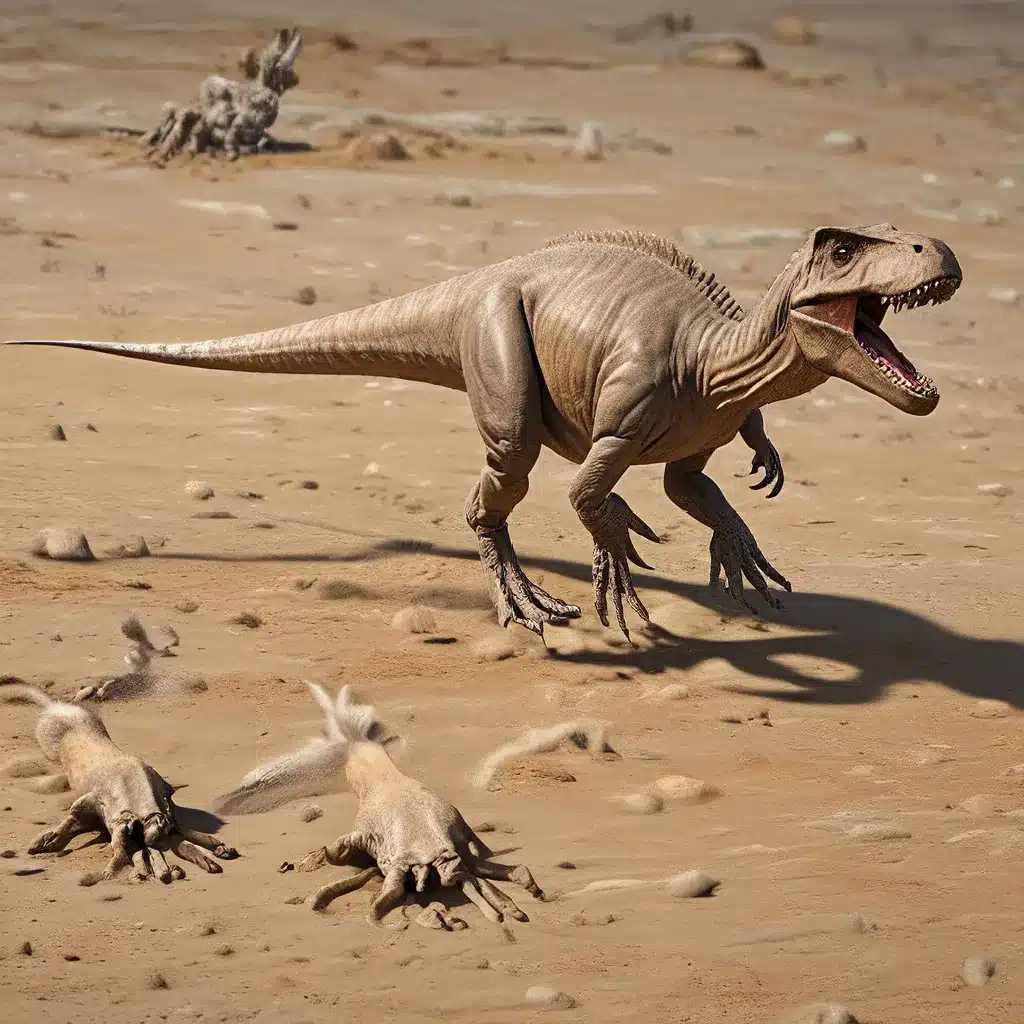
Unearthing the Mysteries of the Mesozoic
The Mesozoic Era, spanning over 180 million years, was a time of remarkable diversity and evolution for dinosaurs. From the Triassic to the Cretaceous, these ancient creatures roamed the Earth, leaving behind a wealth of clues that have captivated paleontologists and the public alike. Through the careful examination of fossils, footprints, and even feathers, scientists have pieced together a fascinating narrative of how dinosaurs evolved, adapted, and ultimately met their demise.
Fossils: The Fossil Record Speaks
Fossils are the physical remains of ancient organisms, providing a tangible connection to the past. Paleontologists, like modern-day detectives, meticulously study these fossils to uncover the secrets of dinosaur life. From the Tyrannosaurus rex to the gentle Diplodocus, each fossil offers a unique window into the world of these prehistoric giants.
The American Museum of Natural History notes that the earliest known dinosaurs emerged during the Triassic Period, approximately 250 to 200 million years ago. Over the course of the Mesozoic, these dinosaurs evolved into an incredibly diverse group, with a vast array of physical features, including the ancestors of modern birds.
One of the most intriguing aspects of the fossil record is the discovery of feathered dinosaurs. These findings challenge the long-held notion that only birds possessed the ability to fly, revealing that the evolution of flight likely had its origins much earlier than previously thought. As the Natural History Museum explains, the process of fossilization is a rare and remarkable occurrence, with the preservation of soft tissues like feathers being exceptionally uncommon.
Footprints and Trackways: Deciphering Dinosaur Behavior
In addition to fossils, footprints and trackways have become invaluable tools in understanding dinosaur behavior and movement. These trace fossils provide insights into the daily lives of these ancient creatures, from their preferred habitats to their social interactions.
By analyzing the size, shape, and distribution of footprints, paleontologists can estimate the height, speed, and even the type of dinosaur that made them. For example, a three-toed, sharp-clawed print likely indicates a theropod dinosaur, a carnivorous species, while a three-toed print with rounded toes may have belonged to an ornithopod, a herbivorous dinosaur.
The study of trackways, which are sequences of footprints, can reveal even more about dinosaur behavior. Researchers have discovered trackways that suggest dinosaurs traveled in herds, much like modern-day elephants or wildebeests. Other trackways have provided clues about the hunting strategies of predatory dinosaurs, such as the Tyrannosaurus rex.
Feathers and Flight: The Evolution of Avian Dinosaurs
One of the most significant discoveries in the field of paleontology has been the identification of feathered dinosaurs. These findings have revolutionized our understanding of the evolution of birds and the relationship between dinosaurs and their winged descendants.
According to the American Museum of Natural History, the earliest known avian dinosaurs, the precursors to modern birds, emerged during the Mesozoic Era. These feathered creatures, such as the Archaeopteryx, possessed skeletal features that were remarkably similar to non-avian dinosaurs, suggesting a close evolutionary relationship.
The presence of feathers in certain dinosaur species has led to the hypothesis that these structures may have first evolved for purposes other than flight, such as insulation or display. This insight challenges the traditional view that flight was the primary driver of feather evolution, opening up new avenues of research and understanding.
Solving the Mystery of Dinosaur Extinction
The mass extinction that occurred at the end of the Cretaceous Period, approximately 66 million years ago, is one of the most significant events in the history of life on Earth. While the exact cause of this extinction event is still a topic of debate, the prevailing theory suggests that a massive asteroid or comet struck the planet, leading to catastrophic changes in the global climate.
Columbia University’s research highlights that the impact of this extraterrestrial event may have had devastating consequences for the non-avian dinosaurs, leading to their ultimate demise. However, other factors, such as changes in sea levels and large-scale volcanic activity, may have also played a significant role in this mass extinction.
The study of dinosaur extinction has captivated the public imagination, with theories ranging from the cataclysmic to the more gradual. Regardless of the specific mechanisms, the disappearance of these remarkable creatures has left an indelible mark on the history of life on our planet.
Piecing Together the Puzzle of Dinosaur Evolution
The study of dinosaurs and their evolution is a constantly evolving field, with new discoveries and insights constantly challenging and refining our understanding. Through the meticulous examination of fossils, footprints, and feathers, paleontologists have uncovered a wealth of information about these ancient creatures, their behaviors, and their place within the larger evolutionary narrative.
As we continue to explore the Mesozoic world, the Lost Kingdoms website remains a valuable resource for those captivated by the mysteries of dinosaur evolution. By delving into the latest research and discoveries, we can gain a deeper appreciation for the incredible diversity and adaptability of these prehistoric giants, and their enduring legacy in the natural world.


